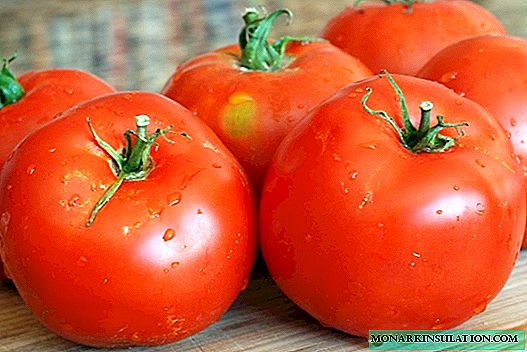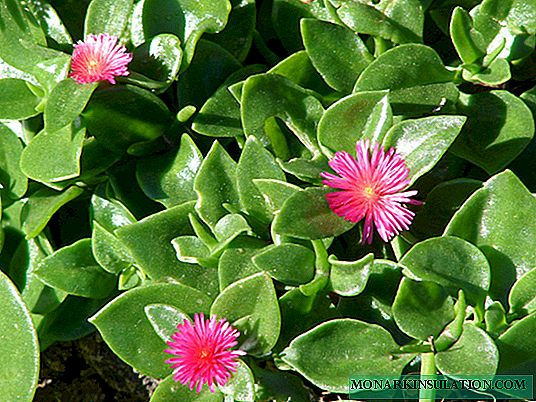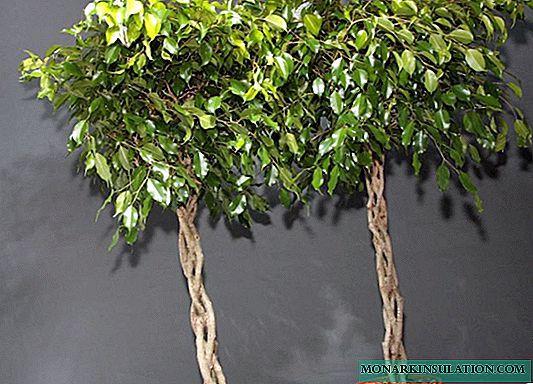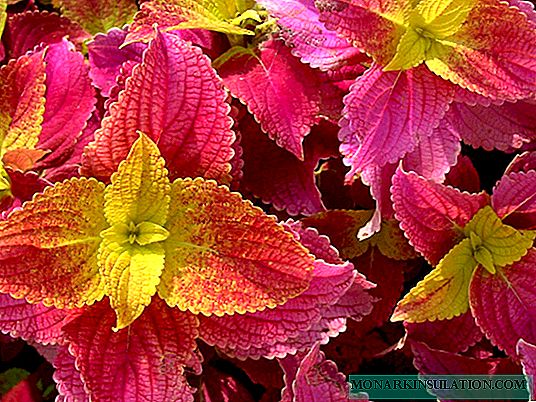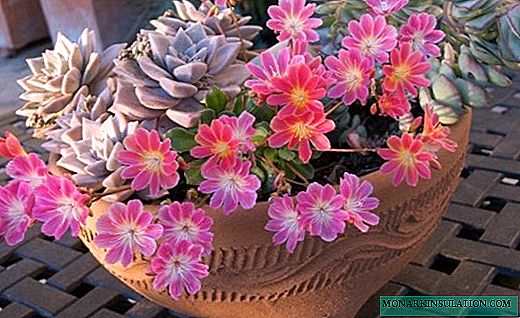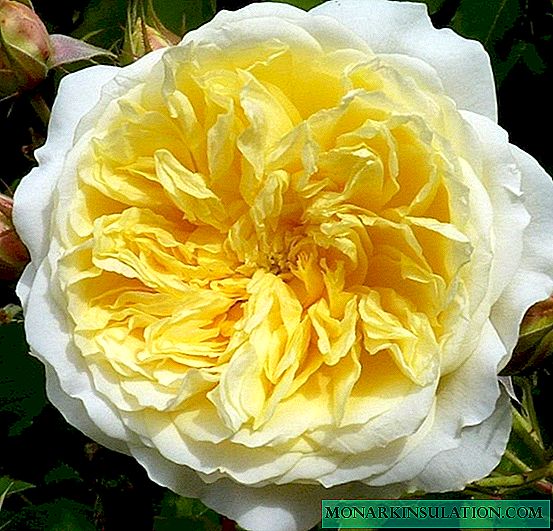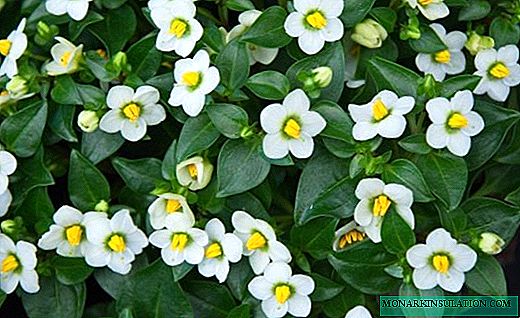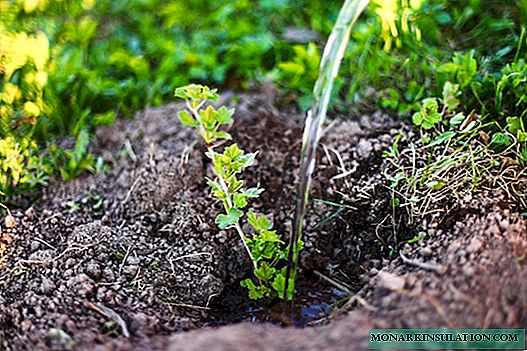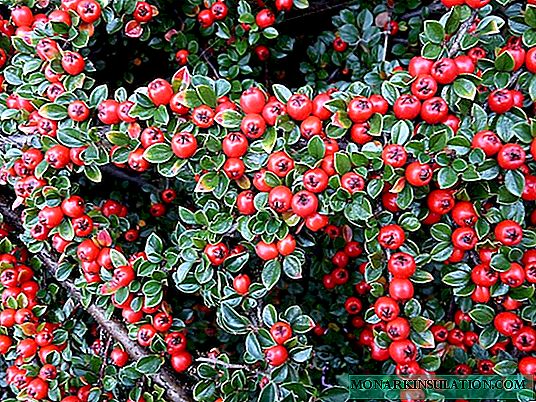
Cotoneaster is one of the bushes successfully used in landscape design. An unpretentious plant in growing, from which it is easy to make various hedges of any configuration by cutting, in the spring it is decorated with numerous small flowers, and in the summer with beautiful small fruits of various colors. Caring for it is very simple, therefore, the popularity of culture in ornamental gardening is very high.
Description and characteristics of cotoneaster species and varieties
Cotoneaster and dogwood are completely different plants, which should be immediately understood by a beginning gardener. If dogwood is most often grown for berries (although the plants themselves are very beautiful), the cotoneaster has inedible berries, it is an ornamental plant.
What is cotoneaster
Wild cotoneaster, belonging to the family Rosaceae, is mainly found in relatively warm regions, both in Eurasia and in America. But many species are so hardy that they can be planted in the north of Siberia. In addition, they are characterized by unusual drought tolerance, which is another plus when using cotoneaster in ornamental crop production.
Cotoneaster normally responds to gas pollution and dust of cities, does not require highly fertile soil, and easily tolerates shading. Almost not sick, but sometimes subjected to pest attacks. Easily propagated by all methods known for shrubs.
A shrub can serve as a stock for a pear, although in practice this ability is rarely used.
Most species of cotoneaster grow in the form of low bushes, almost all drop foliage for the winter, but there are evergreen varieties. Very durable: grows over 50 years. Bushes can be erect or creeping, they are densely covered with small leaves, usually ovoid, dark green in color, sometimes with stripes or a pattern. In autumn, foliage gradually turns red, so the cotoneaster is beautiful at this time of year.

In autumn, red leaves begin to appear on the bushes, and subsequently they all turn purple.
Inflorescences, brush or corymbose, contain many small flowers, in most cases - white or pink. The fruits are apple-shaped, small, first have a green color, and in the process of ripening become orange, red or almost black: the color of the fruit depends on the type and variety of cotoneaster. The fruits are not poisonous, but people are not used for food, and birds feed on them. Contain several seeds. Cotoneaster roots are located not far from the surface, they are highly developed, the branching of roots is used to strengthen slopes and uneven terrain.
Types of cotoneaster
There are many types of cotoneaster, but within each species the number of varieties is small. For example, in the State Register of the Russian Federation there is generally no section devoted to this culture. The greatest frost resistance and pickyness, allowing them to be used in most regions of our country, are characterized by three species: brilliant, aronia, and whole cotoneaster. Horizontal cotoneaster, loosestrife and Dammer cotoneaster are also of great interest.
Cotoneaster brilliant
Cotoneaster brilliant in the wild grows in the east of Siberia, is one of the most common species in the cities of our country. It can grow up to two meters in height. In the wild, it can grow both in the form of thickets and lonely bushes. Leaves, up to 5 cm in size, fall off in the winter. The flowers are pink in color. It blooms in May and June. Ripe black fruits.

Cotoneaster brilliant is best known in our country
The cotoneaster is planted brilliant not only for decoration of landscape gardening areas. Often it is placed on the side of the road: it does not react at all to gas pollution, is extremely unpretentious to weather conditions. Autumn leaves turn purple. The fruits are edible, but tasteless, therefore, are not used in cooking.
Cotoneaster aronia
The cotoneaster also grows to about two meters in height, tolerates adverse weather conditions. The lower side of the ovoid leaf is covered with pubescence, as are the young shoots. Pink flowers, collected in inflorescences up to 15 pieces. Fruits up to 1 cm in size look very much like the fruits of Chokeberry, ripen in early September. They are edible, but not of interest as fruits or berries, but are widely used in folk medicine. However, all parts of the plant have medical use.

The fruits of cotoneaster aronia are easily mistaken for the fruits of chokeberry
Cotoneaster ordinary (whole)
Cotoneaster ordinary grows up to two meters. Annual shoots are pubescent, but subsequently become smooth. Leaves from oval to almost round, opaque, reach 5 cm. From below, they appear whitish, as they are abundantly pubescent. In inflorescences there are only a few flowers, a shrub blooms in early spring. The fruits are round, have a bright red color. In the wild, this cotoneaster grows in the countries of Western Europe, as well as in the Caucasus, but for several centuries it has been used for landscaping urban areas.

Cotoneaster ordinary earlier than others began to be used for landscaping
Cotoneaster horizontal
Cotoneaster horizontal - an inhabitant of the mountains of China. Bushes are very low, up to half a meter. The leaves are dark green, with a strong sheen, leafiness is high. By autumn, the leaves turn red, by winter they fall. The bush blooms with pink-red flowers, the fruits are red, up to 5 mm in size, they are kept on branches for several months. Varieties of this cotoneaster were bred: Variegatus, Perpusillus and Saxatilis, differing in the size of the bush and leaves.

Cotoneaster horizontal - the most famous representative of undersized species
Cotoneaster Dummer
Dammer cotoneaster is a tiny plant up to 30 cm high, but one bush can spread its creeping shoots up to a meter in different directions. Dark green leaves are very dense, small, melliferous flowers, but seemingly uninteresting. The shrub takes on special beauty during fruit ripening. They have a coral red color and hang on branches all winter. This cotoneaster also has varieties: Coral Beauty, Eichholz, Cardinal and Stogholm, differing in the size of the bush and, slightly, the color of the flowers.

Cotoneaster Dammer bears fruit of a very beautiful color
Cotoneaster loosestrife
The cotoneaster, loosestrife, like Dammer, is also distinguished by creeping shoots that are close to the ground. As a result, the bush, having a height of no more than half a meter, spreads two meters wide. Unlike most species, loosestrife does not drop foliage for the winter. The flowers in the brushes are white, the fruits are red, hang on the bushes all winter.

Cotoneaster loosestrife - a representative of the evergreen cotoneaster
Other species
Much less common in our country are other species of this plant:
- brush-colored (grows in the shape of a tree up to 3 meters high, blooms with pale pink flowers, the fruits have a bright red color);
- multi-flowered (shrub grows up to 3 meters, abundantly blooms and bears fruit, but is much less frost-resistant than other species);
- small-leaved (evergreen miniature shrub with white flowers and orange-red fruits);
- felt (bush up to 1.5 meters high, branches with strong pubescence, pink flowers);
- splayed (sprawling bush up to one and a half meters, with bright red fruits, very hardy).
In total, more than fifty species and varieties are known, and all of them are cultivated to one degree or another and are widely used in landscape design, with the aim of landscaping and decorating cities.
Cotoneaster planting, including for creating hedges
In the vast majority of cases, cotoneaster is used as a decorative culture. Species forming creeping crowns of small height are planted as cover plants on lawns and alpine slides. Species growing in the form of shrubs one meter or more tall are used as a hedge that encloses park alleys and garden plots from roads, and the tallest bushes also create shady plots.
Landing pattern
The landing technique of all types looks the same, only landing patterns differ. So, the smallest shrubs are planted at a distance of about 50 cm from each other, tall - less often. Depending on the purpose, they can be planted at distances of 1.0-2.5 meters: denser for hedges, to give bizarre shapes to each bush less often. It is also possible to plant individual bushes far from each other: after all, each instance can serve as an ornament on its own.
Landing time
Cotoneaster of all types is planted mainly in the spring, although there are exceptions: Brilliant and Black-fruited are equally well accepted during spring and autumn planting. Spring planting is carried out after thawing the soil, but before the buds open on the seedlings. Autumn - after the leaves fall, but long before the onset of severe frost. Autumn planting is more suitable for gardeners in warm regions; in the center of Russia and north it is better to plant in the spring.
However, tough deadlines are set only for seedlings with bare roots. Seedlings that have become popular in recent years with a closed root system (in containers) are suitable for planting at any time, except for very hot sunny days. Seedlings can be 2 to 4 years old.

With a closed root system, pretty adult seedlings take root well
Choosing a place and predecessor
Cotoneaster grows in almost any place, and since there is no question of harvesting, a place for planting is chosen based on the need to decorate a particular plot. You should not pay attention to illumination, although the shrub will look somewhat more decorative in the sun. There is no need to select the soil in composition; the only requirement is that it is not swampy, in any case, drainage material is placed in the bottom pits.
The cotoneaster practically doesn’t care what crops grew before it, but, according to the rules of crop rotation, it is necessary to avoid planting it immediately after related, that is, pink-flowered crops. Of course, in our orchards a huge number of fruit and berry trees and shrubs, which are among them, are grown. This is an apple tree, and a pear, and a cherry, and raspberries with strawberries. And among the ornamental shrubs there is a rose, rose hip, hawthorn, etc. Therefore, if you have a choice, you should not plant a cotoneaster after them, but of course there is no strict ban on planting.
Soil preparation and planting pit
Cotoneaster is not very demanding for soil fertility, but since it is planted for many decades, when digging a site to remove weed rhizomes, they try to fertilize it a bit, and if planting a cotoneaster, it is multiflorous and to produce it by adding slaked lime at a dose of 200-300 g / m2. 1 m compost buckets2 digging will be enough. In the case of clay soils, sand is applied at approximately the same dosage.
If the bushes are planted at a considerable distance from each other, they dig planting pits, if they are going to grow a hedge, it is more convenient to dig a common trench. The pit should have dimensions of about 50 x 50 x 50 cm, the trench digs a similar width and depth. It is important to lay down gravel, pebbles or gravel with a layer of 10-15 cm, above which fertile soil is poured. The optimal composition is turf land, river sand and peat (or compost) in a ratio of 2: 2: 1. 100-150 g of lime in the pit will not interfere with any type of cotoneaster.

The drainage layer at the bottom of the cotoneaster pit is required
Planting and transplanting processes
Planting cotoneaster in a prepared pit is not difficult. Having taken out the necessary amount of the soil mixture from the pit, the seedling is set so that the root neck is 2-3 cm above the ground level (with the subsequent compaction of the soil it should fall exactly to the ground). This is an important point: a significant deepening of the root neck can lead to the death of the plant. Otherwise, everything is as usual: the seedling is well watered, the soil is mulched with peat crumbs or any other material.
Cotoneaster is good in that it can be transplanted at any age, as long as it is physically possible (the bush is not too large, the root system can be removed without severe damage). The transplant is performed in spring or autumn, but young bushes, if they can be removed with a lump of land, can be replanted even in summer. It is important when digging a bush to preserve the roots as much as possible, and in a new place to plant it at the same depth and water well. Perhaps in the first couple of years the transplanted bush will bloom significantly less.
Video: cotoneaster landing along the fence
Cotoneaster Care
Cotoneaster care is extremely simple. And if in the first year or two after planting it is necessary to water and weed it periodically, then after the seedling has taken root well and grows, you can generally not pay attention to it.
Watering, top dressing
The cotoneaster bush that has taken root requires watering only in case of prolonged drought. However, even without this, he most likely will not perish, but it will grow poorly and bloom sparsely. Therefore, if you want to squeeze out all the possible splendor from the bush, it is periodically watered and fed. After watering, loosening the soil is necessary if it is not contained under a layer of mulch.
If it is possible to water from a hose, you can do it not under the root, but on the crown: in dense thickets a lot of dust and debris always gets stuck, at the same time they also carry out sanitary cleaning of the bush.
When watering, it is important to observe the measure: it is better to keep this plant on semi-dry soldering than in marshy soil. In case of drought, up to 80 liters of water can go to an adult bush, but next time watering will be required soon.
The usual rule applies to top dressing: in spring, the plant most needs nitrogen, in summer in potassium and phosphorus, in autumn in potassium. Autumn top dressing is usually carried out using ash (up to half a liter per square meter), early spring - urea (a couple of handfuls for an adult bush), and at the beginning of flowering superphosphate and potassium sulfate (30-40 g / m2) Mulching the soil before winter with a humus layer of 3-4 cm completes the nutrition cycle in season. After mulching, some heat-loving species of cotoneaster in cold regions slightly cover for the winter, bending branches and throwing pine conifer on them.
Cropping and shaping
Cotoneaster tolerates pruning easily, does not get sick from this, and often even feels better. The formation of the bush, giving it the desired shape is best done in the spring, before the buds open. It is not necessary to shorten the shoots left at a time by more than a third. Pruning stimulates cotoneaster to shoot growth and branching. Pruning, cone-shaped bushes make pruning from the bushes, they form them in the form of a ball, a cube and even various living figures. True, it is better for an inexperienced gardener not to get involved in these actions without quality training.

Designers make any shapes from cotoneaster bushes
Sanitary pruning is carried out at any time and does not require special knowledge: everything that is broken, dried, damaged by pests and frozen out must be cut out. Over the years, the oldest shoots are cut, rejuvenating the bushes, as well as those that too thicken the crown.
Protection against diseases and pests
Cotoneaster is extremely rare. Only in conditions of excessive humidity and adverse weather do fungal diseases sometimes arise, most often fusarium.The diseased fragments must be cut out and the bush sprayed with Bordeaux liquid (in spring and autumn 3% liquid is used, during the growing season, 1% on green leaves). If the disease has gone far, you can try replanting young bushes to a new place, cutting them off severely, and the soil after them can be well disinfected with potassium permanganate or vitriol. The presence of a drainage layer in the planting pit and periodic loosening of the soil are a good prevention of fungal diseases.

When fusarium is covered with spots and fade whole shoots
Pests are found on the cotoneaster somewhat more often. It can be apple aphids, scale insects, various mites. In the initial stage, with a small number of pests, they try to cope with folk remedies. Decoctions of yarrow, tobacco dust, marigolds or an infusion of ash and soap can help. After a few days, the treatment will need to be repeated.
If such measures do not help, and the number of pests is increasing, resort to insecticides. Since cotoneaster is not used for food, chemical preparations can be used at any time. It is only important to take precautionary measures: as a rule, the permitted insecticides belong to the 2nd or 3rd hazard classes, and spraying should be carried out in protective clothing and a respirator. Any preparations can help against insects on cotoneaster, but in order to be sure, they immediately use Aktaru or Actellik.
Breeding methods
Cotoneaster is propagated both by seeds and vegetatively. Vegetative propagation is easier and more often used, and sometimes adult bushes can even be dug out and divided into parts.
Propagation by cuttings
Propagation of cotoneaster by cuttings is carried out similarly to reproduction, for example, of currant or chokeberry. Both lignified cuttings and green ones are used. With lignified the process is much easier. After the first frost, it is enough to cut the cuttings from the annual side shoots, and in the spring to plant them in loose moist soil. The stalk should be at least 15 cm long and have three buds. In winter, cuttings are stored in the cellar in slightly moist sand. They are planted obliquely, so that the middle kidney is at ground level. During the summer, cuttings are watered, loosen the soil, and after a year, young bushes are planted in a permanent place.
Green cuttings are cut closer to mid-summer, in early July. They are necessarily treated in solutions of growth stimulants, after which they are planted in a mixture of peat and sand: it is possible in a box, or in a garden. Until the end of the season, cuttings should be in moist soil and humid air. Therefore, they are covered, for example, with a half of a plastic bottle, and make sure that it is moist underneath but not cuttings (for the first time, you can simply put plastic bags on them). If everything goes well, by the spring, small seedlings will also be ready.
You can use combined cuttings.
Video: cotoneaster reproduction with combined cuttings
Propagation by layering
Breeding by layering is a very simple technique, especially in the case of stunted cotoneaster species. In spring, they plan a young strong shoot growing on the periphery of the bush, and try to bend it to the ground. If it turns out, they dig the soil at this place, fertilizing with humus, make a recess of 8-10 cm, where they lay the shoot and pin it with wire or any other convenient object. They fill the hole with fertile soil, water it, and mulch it. This place is kept wet during the summer. By autumn, from each bud on this shoots a new plant with roots will already grow, but it is better to separate them and transplant with a lump of earth next spring.
Propagation by seeds, including at home
Reproduction by seeds is the most time consuming. Ripe fruits are dried and seeds are taken from them, after which they are washed well in water and sorted. The easiest way is to let them swim in a jar of water and use only drowned ones. Seeds are mixed with peat-sand substrate and removed until spring for stratification in a cellar or other room with a temperature of about 0 aboutFROM.
In spring, the seeds are sown in loose, moist soil to a depth of about 2 cm. The garden bed is covered with a film so that it does not dry out, but periodically raise it for ventilation. Seed germination is very uneven: the first seedlings may appear in two weeks, and the next will have to wait as much, or even more. In any case, a germination rate of 20% is already an achievement. Throughout the summer, the seedlings are carefully looked after, by autumn they can grow to a height of 15-20 cm. Next spring, you can carefully transplant seedlings to a permanent place.
Video: sowing cotoneaster seeds
You can sow seeds and at home. They are prepared for sowing in the same way, but it is also desirable to scarify them, that is, to facilitate the penetration of sprouts through the shell. Sometimes it is advised to use sulfuric acid, but it is safer to use the alternation of temperatures: immerse the seeds alternately for 2-3 minutes in boiling water and ice water, repeating this 3-4 times. Apply and soak the seeds before sowing in the Epina solution.
In early spring, seeds are sown in a box with a mixture of peat, sand and leaf soil to a depth of 1.0-1.5 cm. After the appearance of the first sprout, the box is placed on a light windowsill. With a lack of light, artificial illumination is performed, beingware of burns of young leaves. After the appearance of a sufficient number of seedlings, they, along with the substrate, are sprayed with 1% Bordeaux liquid for prophylactic purposes.
After the appearance of a pair of true leaves, the seedlings dive into separate pots with a volume of about 2 liters. Care for them consists of periodic watering and tracking of light and temperature conditions. Planting in open ground is best at a year and a half.
Cotoneaster - an interesting plant used in the landscaping of city parks, squares, alleys, roadsides. It is beautiful in spring, summer and autumn, and many species are year-round. The most important thing is that cotoneaster requires minimal maintenance and grows in almost any environment.

